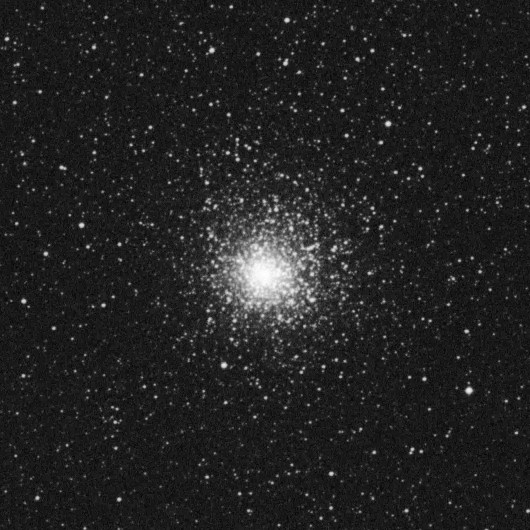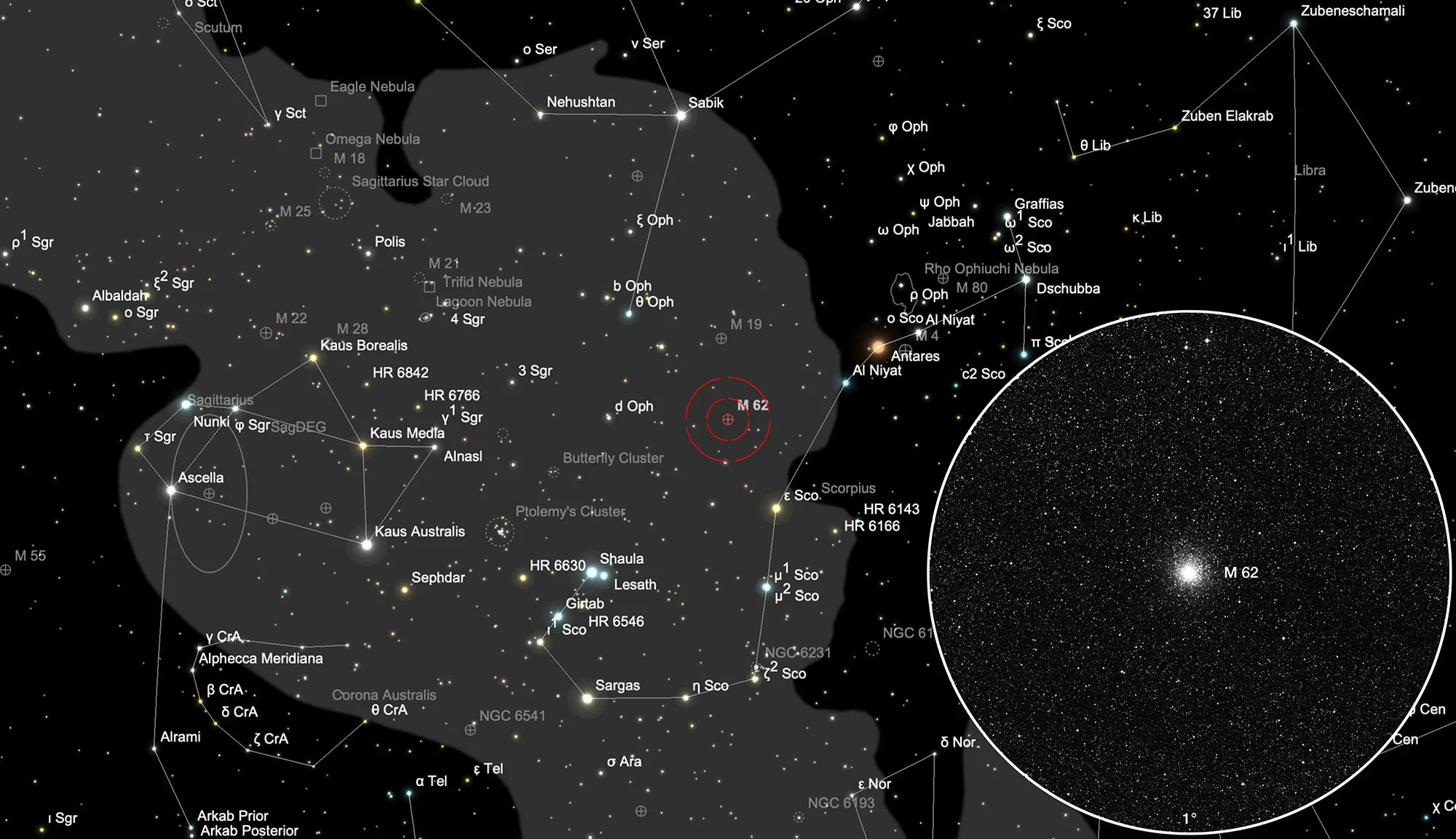Globular Cluster Messier 62

History
The globular cluster Messier 62 is one of the discoveries that can be ascribed to Charles Messier. He stated 4 June 1779 as the date of discovery and wrote: «Very beautiful nebula, discovered in Scorpio, it resembles a small comet, the centre is brilliant and is surrounded by a weak light. Position determined in relation to the star τ in Scorpion. M. Messier had already seen the nebula on 7 June 1771, without having precisely determined its location. Checked on 22 March 1781.» [281]
William Herschel recognized a star cluster for the first time in M 62 and saw in it a miniature version of the globular star cluster Messier 3 in Canes Venatici.
Physical Properties
The globular cluster lies in the direction of a star-rich area of the Milky Way, so that the vicinity of the cluster is speckled with small stars. It appears that N 62 actually lies in the star-rich central region of the galaxy. The loss of light by absorption in the area is estimated to be 2.4 magnitudes.
M 62 is one of the most asymmetrical globular clusters. The non-spherical shape was probably first noticed by John Herschel in 1847. The scattering of faint stars is greater on the north side of the globular cluster than on the south side. It is also possible that only the darkening of the south side by foreground matter is greater. M 62 seems to be the most comet-like of the objects recorded by Messier.
By 1973, 89 variables were counted in the globular cluster. There is also an asymmetry in their distribution: the number is greater in the northern part. Almost all variables are short-period of the RR Lyrae type. The distance of 26'000 light years derived from this is still considered uncertain, as measurement errors due to the darkening are unavoidable. The cluster shows a radial velocity of 74 km/s. [4]
| Designation | NGC 6266 |
| Type | GCL (IV) |
| Right Ascension (J2000.0) | 17h 01m 12.6s |
| Declination (J2000.0) | -30° 06' 42" |
| Diameter | 15 arcmin |
| Visual magnitude | 6.4 mag |
| Metric Distance | 6.800 kpc |
| Dreyer Description | ! globular, vB, L, gmbM, rrr, st 14…16 |
| Identification, Remarks | h 3661; GC 4261; M 62; GCL 51; ESO 453-SC14 |
Finder Chart for Messier 62
The globular cluster M 62 is located in the constellation Ophiuchus (Serpent Bearer), roughly between the stars θ Ophiuchi and ε Scorpii, about a third closer to ε Scorpii. In the months of February to November it is favourable for observation.
